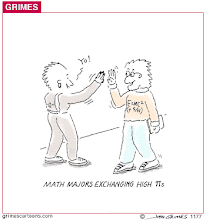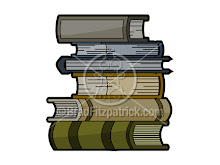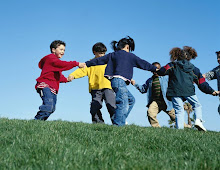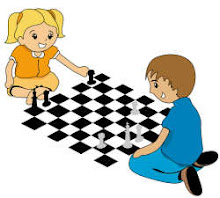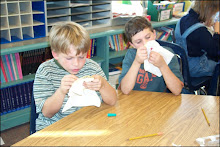This term we have been learning about various forces and types of movement in science class. Have a look at what we’ve learned so far!
5 Phenomenal Forces
Muscular Force
The muscles in your body are attached to bones. Muscles pull on these bones. This is called muscular force.
Gravitational Force
Planets pull objects toward them. Earth pulls you and other objects toward it. This pulling force is called gravity.
Frictional Force
When two objects slide over each other they rub and push against each other. This pushing force is called friction.
Buoyancy Force
What happens to the water when you jump into a pool? Some of the water splashes up. Your body pushed down on the water and the water pushed up on you. This made the splash. This upward pushing force is called buoyancy.
Magnetic Force
A magnet is a piece of iron or steel that attracts other pieces of iron or steel. This attraction can happen naturally, or can be created by people. Magnetics either push away or pull together.
Dear Parents,
Come join us on April 13th when Scientists in the School program visit our classroom to lead our students through a morning of experiments that will test and explore forces. Discover the science behind magically removing a table cloth from underneath the dishes without breaking any. Encourage a magnet to defy gravity while investigating magnetism. Charm a snake to learn about electrostatic force. Design a marble run and explore the effects of friction. Learn how to make a tornado with the flick of your wrist!
If you are available to volunteer your time on April 13th from 9:00am to 11:30 am, please send me an e-mail or a note with your son/daughter. Thank you in advance your continued support.
What’s up next in science?
Structures and Mechanisms
If you are not available to volunteer on April 13th, you can join us on June 6th when Scientists in the School program visit us again to build our knowledge on structural strength and stability. Students will be junior engineers for the day as they explore the difference between man-made and natural structures. They will also investigate how the strength of a material can be altered by its shape. Students will create structures and learn the impact of forces acting upon them. Lastly, students will take up the challenge to design, build, and test a bridge!
Wednesday, April 7, 2010
Language Strategies based on the #5
A Parent’s Guide to Comprehensive Literacy...
The Toronto Catholic District School Board is committed to guiding students to become confident and reflective lifelong readers and writers. Comprehensive literacy is delivered through the model of the literacy block. Listed below are the language strategies your child partakes in while visiting the 5 activity centers.
The Daily 5
Your child visits 5 activity centers for 20 minutes a day. The activities are aligned with the expectations in the grade 3 language curriculum documents focusing on writing and shared and guided reading. Student’s
 sign up for 3 different activities to ensure they each get a turn at each activity center.
sign up for 3 different activities to ensure they each get a turn at each activity center.Daily 5
Read to self
Read to Someone
Work on Writing
Listen to Reading
Word Work
The following are the strategies that your child uses in their visits to the Daily 5 Centers.
 Reading:
Reading:5 Reading Workshop Strategies
Read-Aloud
Interactive Reading
Shared Reading
Guided Reading
Independent Reading
 5 Keys to Unlocking Words
5 Keys to Unlocking WordsLook at the picture
Look at the beginning letters, say the first sound and think about the picture
Look for what you know inside the word (chunks, patterns, blends)
Cover up part of the word and sound it out in sections
Skip the word and read the rest of the sentence. Come back and try to figure out what word would make sense.
Writing:

5 Writing Workshop Strategies
Modelled Writing
Shared Writing
Interactive Writing
Guided Writing
Independent Writing

5 Tips to a Perfect Spelling Bee!
Copy the word and say it aloud.
Look at the word and spell it aloud.
Close your eyes and spell the word aloud.
Write the word without looking at it.
Correct the word, if needed.
Comprehension
5 components of Schema (my thoughts and my ideas)

Things I’ve seen
Books I’ve read
People I know
Places I’ve Been
Special things I’ve done

5 Steps to Retelling a Story
First...
Then...
Next...
Finally...
At the End...

5 Finger Reading Comprehension Strategy
Characters
Setting
Problem
Solution
Favourite Part
5 Step ‘Go Chart’
(use this chart when reading with your child to enhance comprehension)
Predictions
What I think the story might be about...
Vocabulary
I think the author might use these words to tell the story...
Understanding
I noticed...
Interpretations
I wonder...
Connections
This reminds me of...
Visit http://www.tumblebooks.com/library/asp/home_tumblebooks.asp to read along with Robert Munsch and other create authors. This website brings books to life and is fun for the whole family!
5 Strands of Math
 Number Sense and Numeration
Number Sense and Numeration5 ways to represent a number.
For example: # 16 can be represented using:
A Model: such as base ten blocks
Numerals: 16
Numerals in expanded form: 10+6
Numerals and words: 1 ten and 6 ones
A numbe r word: sixteen
r word: sixteen
Measurement
5 mathematical tools used for measuring
Telling time to the nearest 5 minutes
Measuring distance using kilometres
Identifying temperature benchmarks
Measuring perimeter and area
Measuring mass and capacity
Geometry and Spatial Sense
5 strands we’re learning about...
5 shape sorting rules: roll, slide, corners, round, stack
Identifying & comparing right angles
Classifying 2 & 3-D shapes by geometric properties
Naming prisms and pyramids
Identifying congruent shapes

A Model: such as base ten blocks
Numerals: 16
Numerals in expanded form: 10+6
Numerals and words: 1 ten and 6 ones
A numbe
 r word: sixteen
r word: sixteenMeasurement
5 mathematical tools used for measuring
Telling time to the nearest 5 minutes
Measuring distance using kilometres
Identifying temperature benchmarks
Measuring perimeter and area
Measuring mass and capacity

Geometry and Spatial Sense
5 strands we’re learning about...
5 shape sorting rules: roll, slide, corners, round, stack
Identifying & comparing right angles
Classifying 2 & 3-D shapes by geometric properties
Naming prisms and pyramids
Identifying congruent shapes

Patterning and Algebra
5 ways to recognize, extend, and create patterns
Create, extend, and compare patterns
Finding patterns in the 100 Chart
Using a T-chart to represent & extend patterns
Describing a pattern using math language
Display models of repeating patterns on charts
5 ways to recognize, extend, and create patterns
Create, extend, and compare patterns
Finding patterns in the 100 Chart
Using a T-chart to represent & extend patterns
Describing a pattern using math language
Display models of repeating patterns on charts
Data Management and Probability 
5 ways to collect, sort/organize and record data
Venn Diagrams
Tally Chart
Pictographs
Bar Graphs
Circle Graphs

5 ways to collect, sort/organize and record data
Venn Diagrams
Tally Chart
Pictographs
Bar Graphs
Circle Graphs
Visit http://mathville.com for some online fun!
Health
Hey Kids! Eating Healthy is Fun!
Explore healthy eating tips, exercising adventures, fitness tips, recipes, songs, games, comics and videos by visiting the Dole website. Take the Dole 5 a day challenge and eat 5 fruits and vegetables a day to keep the doctor away! Get physical and sing along with the words to the SuperKids 5 A Day Song by clicking on this hyper link: http://www.dole.com/SuperKids
In health class have been learning about the Food Pyramid. Print off a copy and post it somewhere in the kitchen for the whole family to see!
Visit this interactive website where you can create your own breakfast, lunch and dinner plates and have it analyzed using government guidelines. You will also find tips and recipes for healthy eating. http://www.fruitsandveggiesmatter.gov/activities/analyze_my_plate.html

5 Alive With DPA Everyday!
 5 Alive with DPA Everyday!
5 Alive with DPA Everyday!Our classroom is Stayin’ Alive with DPA 5 days a week! Each morning our class begins with 15 minutes of Daily Physical Activity to get student’s hearts pumping and thoughts flowing. It has been proven that physical activity enhances the function of the brain and helps keep students alert in class. Try these activities at home and keep the whole family ALIVE!
Monday’s DPA Activity is ‘Taking the Lead’
In this activity, students take turns leading the class in moderate to vigorous ‘on the spot’ physical activities. Students are in groups of 4 and stand forming a ‘diamond shape’. All students face the same direction. The player at the front of the diamond is the first leader. When the music starts, the leader leads the other three in an on the spot movement. When the teacher pauses the music, everyone turns 90 degrees (in the same direction) and the new leader leads the group when the music continues. Students should come up with fun, heart pumping activities.
Tuesday’s DPA Activity is Singing and Acting!
Sing the song ‘My Body’
(Sung to the tune of ‘My Body lies Over the Ocean’)
My body lies over the sofa,
My body lies every day,
My body is feeling disgusting,
Oh bring back my body to me!
Bring back, bring back,
Oh bring back my body to me,
to me,
Bring back, bring back,
Oh bring back my body to me!
Try this while singing the song...
Start singing the song in a sitting position. Every time you sing a word with the letter ‘B’ in it, change your position. For example, if you start off the song by sitting, move to stand and continue through the song. Including physical activity while singing the song promotes critical thinking, trains the mind to focus on the task at hand and is 5 times the FUN! Try this at home with any of your families favourite songs!
Wednesday’s DPA Activity is Active Spelling!
Active Spelling is another great way to get the students active and re-energized while reinforcing curriculum. A chart is posted in the classroom with ‘on the spot’ heart-pumping actions for each vowel. For example, the action for ‘A’ is 5 jumping jacks, ‘E’ is running on the spot for 1 minute, ‘I’ is 5 left leg lunges, ‘O’ is 5 right leg lunges and ‘U’ is reaching up to the sky then bending and touching your toes 5 times. Using words from our word wall, each student will choose a word. Every student spells out the word out loud. Students stretch/bend etc...into the shape of the consonants and the perform the actions of the vowels listed on the chart. Students run on the spot while waiting for the next word to be chosen. Try this at home with your own list of words!
Thursday’s DPA Activity is Monte Carlo!
All you need for this activity is a deck of cards and your imagination! The entire class stands up and begins moving on the spot. The teacher has one student choose from a deck of playing cards. All the students then find the matching card on the chart and perform the corresponding activity. For example, if the 10 of hearts is chosen the students will have to do 10 jumping jacks. After performing the activity the class returns to the previous moving on the spot activity until another card is chosen.
All you need for this activity is a deck of cards and your imagination! The entire class stands up and begins moving on the spot. The teacher has one student choose from a deck of playing cards. All the students then find the matching card on the chart and perform the corresponding activity. For example, if the 10 of hearts is chosen the students will have to do 10 jumping jacks. After performing the activity the class returns to the previous moving on the spot activity until another card is chosen.
Friday’s DPA Activity will keep you ‘rolling’ through the weekend!
Precise Dice is an activity that uses two dice and lots of energy! Students start by moving on the spot. The teacher has two students role the die. The die are added up and matched with the appropriate activity on the chart paper. For example, if a 12 is rolled, students will have to do 6 lunges for each leg. The students return to moving on the spot while they wait for two other students to roll the die.
Precise Dice is an activity that uses two dice and lots of energy! Students start by moving on the spot. The teacher has two students role the die. The die are added up and matched with the appropriate activity on the chart paper. For example, if a 12 is rolled, students will have to do 6 lunges for each leg. The students return to moving on the spot while they wait for two other students to roll the die.
Tuesday, April 6, 2010
5 Ways Parents can Support their Child's Learning

5 ways parents can support their child’s learning and school:
1. Spend a few minutes every evening looking over handouts your youngster brings home. Fill out forms to return the next day.
2. Tell your child’s teachers if you can help them out at school or home.
3. Make sure teachers know you appreciate their efforts. From time to time, send a thank-you note or an e-mail.
4. Contact your child’s teacher immediately if you see a problem. Working together will help your youngster succeed.
5. Attend conferences, parents meetings, and school events regularly.
Visit http://www.eddetective.ca/ with your child. This is a safe website that promotes learning through games, activities and storytelling.
1. Spend a few minutes every evening looking over handouts your youngster brings home. Fill out forms to return the next day.
2. Tell your child’s teachers if you can help them out at school or home.
3. Make sure teachers know you appreciate their efforts. From time to time, send a thank-you note or an e-mail.
4. Contact your child’s teacher immediately if you see a problem. Working together will help your youngster succeed.
5. Attend conferences, parents meetings, and school events regularly.
Visit http://www.eddetective.ca/ with your child. This is a safe website that promotes learning through games, activities and storytelling.
Welcome to...

Mrs. Tafuri’s 5 Star Classroom
Gimme 5!
1. Feet still
2. Hands crossed
3. Mouth closed
4. Eyes watching
5. Ears listening
Now that I have your attention...check out all the amazing things we are doing in our grade 3 class that involve the number 5!
2. Hands crossed
3. Mouth closed
4. Eyes watching
5. Ears listening
Now that I have your attention...check out all the amazing things we are doing in our grade 3 class that involve the number 5!
Subscribe to:
Comments (Atom)

